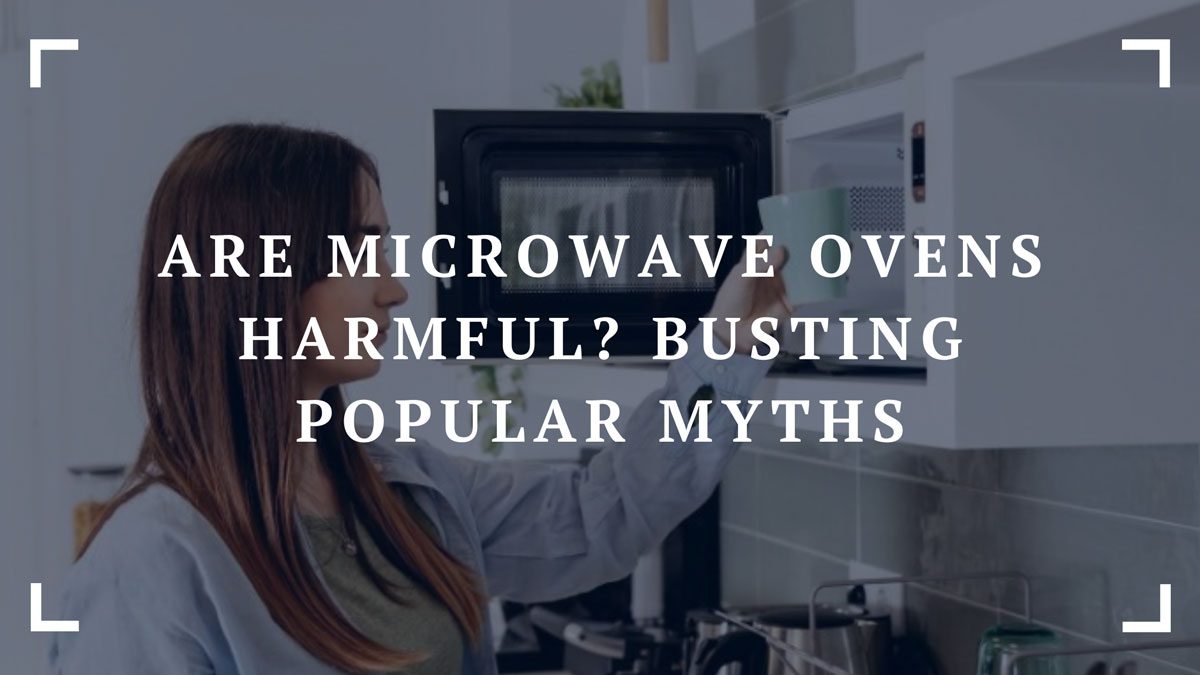Microwave ovens have long become an essential part of every modern house. Billions of people worldwide use microwaves daily to cook and to instantly warm up their food. They cannot imagine their lives without such a versatile device.
Yet, there are many microwave skeptics, who think that microwave radiation is harmful to their bodies and food. They were exposed to the popular myths surrounding the way microwave radiation affects water and food.

Inspired by a series of consultations with home alliance technicians, the team of experts who’ve repaired thousands of microwave ovens for private and business customers, there is a scientific and logical debunking of the skeptics’ main prejudices.
Myth #1. Radiation Destroys the Molecular Structure
The first and perhaps most common myth is related to the fact that microwave-emitted radiation literally breaks molecules and thereby changes the physical structure of food. This myth leads us to the so-called isometry (the reorientation or reorganization of molecules).
From chemistry, we know that isometry is based on the existence of isomers – molecules with identical composition and molecular weight, but different structures and properties.
Microwave radiation affects only water molecules present in every food. However, water is an amorphous substance that has no structure (except for its hardened form – ice).
The only effect that occurs, in this case, is similar to the effect of heating any organic material in general. Complex organic compounds are broken down into simpler ones, thereby improving the digestibility of food!
Nevertheless, the proponents of microwave harm are right about one thing only after exposure to microwave radiation, food is no longer the same. It becomes hot.
Myth #2. Microwave Oven “Emits Nuclear Radiation Similar to a Small Nuclear Reactor”
There is also a popular myth that a microwave oven, even when turned off, becomes a source of nuclear radiation.
Let’s explain in quick and simple terms first. Only gamma radiation with a wavelength of less than 3 picometers can leave behind residual radiation, while the wavelength in a microwave oven is 12 cm. That is, it physically cannot be a source of nuclear radiation.
Electromagnetic waves are essentially part of the spectrum of light. That is, these are waves of different lengths, including visible light (the colors of the rainbow, or the beauty that we see in the skies with a naked eye).
Let’s list the electromagnetic wave types in order, starting with the waves of the longest length:
- radio waves;
- microwaves;
- infrared radiation;
- visible light (what we see with the naked eye);
- ultraviolet;
- X-ray (X-ray);
- gamma radiation.
Everyone knows that gamma radiation is dangerous. This is what scientists call nuclear radiation. However, in the entire electromagnetic spectrum, microwaves pertain to some of the longest waves. They stand next to conventional radio waves and infrared radiation (essentially just heat), but not even close to gamma radiation!
Microwaves do not produce ionizing radiation (like X-rays, for example). In other words, microwaves do not emit any nuclear radiation.
Myth #3. Microwaves Cause Cancer
Stories are floating on the Internet about how microwave radiation causes cancer. Pseudo-scientists claim that several clinical trials showed extremely negative consequences of microwaves for the human body.
Consequently, they claim that the USA, Canada, and several European countries banned the very first microwave ovens in the 1950s and 1960s because of those trials.
However, it didn’t stop even Norway, the country famous for its strict public health and security standards, from beginning to mass-produce the “Tandberg Microwave Oven” back in 1959. That was one of the earliest microwave ovens manufactured in Europe.
Cancer is not a type of disease that is transmitted into the human body via food. As mentioned above, microwave radiation is not harmful in any way, and it doesn’t change the structure of the food in any negative way for human health.
The Bottom Line
People have a zillion prejudices and superstitions, even in our digital age. The fear of microwave ovens is not the weirdest of all, for sure, but a very resilient one. Despite the convincing evidence from scientists and experienced technicians, many people continue to believe in phantom nuclear radiation emitted on the inside and outside of a simple microwave oven.
The easiest way to debunk this myth is by looking at the entire electromagnetic spectrum to see that microwave radiation is just a narrowband between conventional radio and infrared waves.
For some reason, microwave skeptics are not afraid of their radios. However, they may just as well be very scared of infrared radiation, the one used in television remote controls, night vision sensors, and cameras, as well as in omnipresent medical and household heaters.
In any case, microwave ovens are much gentler on food and water, than ordinary stoves. The surface of the dishes on a regular stove constantly burns and forms an unhealthy film on the products that we cook and heat on it. However, that subject would be better suited for another article.


